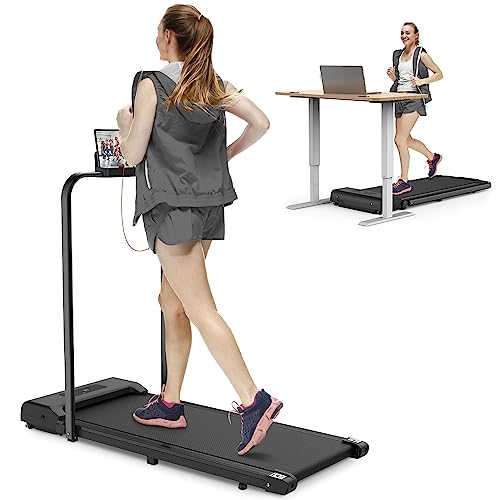
Treadmills Uk
Add a review FollowOverview
-
Founded Date May 31, 1912
-
Sectors Housekeeping
-
Posted Jobs 0
-
Viewed 5
Company Description
10 Unexpected Walking Machine Tips
The Walking Machine: A Comprehensive Guide to Your Fitness Companion
In today’s busy world, where time is a luxury, preserving a consistent workout regimen can be a difficulty. For lots of, a walking machine– typically referred to as a treadmill— serves as an ideal fitness companion. This short article provides an in-depth look at walking machines, including their advantages, types, maintenance suggestions, and regularly asked questions.

Why Choose a Walking Machine?
Walking machines provide a practical and effective way to integrate cardiovascular exercise into every day life. Here are several crucial advantages:
- Convenience: Walking machines permit individuals to work out anytime, despite weather or time restrictions. They are ideal for busy schedules.
- Flexibility: Users can walk, jog, or run at their own speed and strength.
- Safety: Walking machines provide a lower threat of injury compared to outdoor walking or running, specifically for novices or those recovering from injuries.
- Tracking Progress: Many treadmills included integrated monitors that track metrics like speed, range, and calories burned.
Types of Walking Machines
When considering a walking machine, it’s vital to select the right type based on individual physical fitness objectives and area restrictions. Below are the main types of walking machines:
| Type | Description |
|---|---|
| Handbook Treadmills | These machines do not have a motor, and users need to stroll or run to turn the belt. |
| Electric Treadmills | Powered by an electric motor, enabling users to set the speed and slope effortlessly. |
| Folding Treadmills | Designed for easy storage, these treadmills can be folded when not in usage. |
| Desk Treadmills | Ideal for a double work and exercise environment, these compact machines allow walking while working. |
| Slope Trainers | These permit users to simulate uphill walking, improving exercise intensity and calorie burn. |
Choosing the Right Walking Machine
Picking the right walking machine can considerably affect motivation and efficiency. Here are some elements to think about:
Key Features to Look For
- Motor Power: A powerful motor guarantees a smooth and constant exercise. For periodic walkers, a 1.5 HP motor is typically adequate; for much heavier use, search for 3.0 HP and above.
- Belt Size: A wider and longer belt provides more space for a comfortable stride. Standard sizes range from 16 inches large and 50 inches long.
- Slope Options: Adjustable slope settings can simulate walking or running uphill, increasing the intensity of the workout.
- Shock Absorption: Good shock absorption minimizes the threat of joint injuries and improves comfort.
- Console Features: Look for integrated exercises, heart rate screens, and connectivity features like Bluetooth for a more appealing experience.
Budget Considerations
Walking machines come in a large range of rates, depending on functions and building and construction quality. Here’s a rough budget plan breakdown:
| Price Range | Functions |
|---|---|
| Under ₤ 300 | Standard manual or little electric treadmills with limited functions. |
| ₤ 300 – ₤ 700 | Advanced electric treadmills with slope, medium power motors, and much better guarantees. |
| ₤ 700 – ₤ 1500 | Top quality electric treadmills with larger integrated display screens, extensive functions, and service warranties. |
| ₤ 1500 and above | High-end designs using innovative innovation, features, and durable building for severe physical fitness lovers. |
Upkeep Tips for Your Walking Machine
To guarantee longevity and ideal performance of a walking machine, consider the following upkeep ideas:
- Regular Cleaning: Dust and sweat can collect on the machine and the belt. Wipe down the surfaces and tidy the belt frequently.
- Lubrication: Depending on the design, lubricating the running belt periodically can avoid wear and tear. Check the producer guidelines for advised lubrication schedules.
- Assessment: Periodically examine the machine for loose screws or used parts. Tighten up and change as required.
- Calibration: Occasionally, inspect the calibration of your machine’s metrics to ensure they supply accurate data.
- Proper Use: Follow the producer’s recommendations for weight limitations and operational guidelines.
FAQs About Walking Machines
1. Are walking machines an excellent exercise?
Yes, walking machines offer an excellent cardiovascular exercise, can help with weight reduction, and enhance total health.
2. How typically should I use a walking machine?
Aim for a minimum of 150 minutes of moderate-intensity aerobic activity weekly, which can easily be achieved with regular sessions on a walking machine.
3. Can I reduce weight on a walking machine?
Yes, including a walking machine routine into a healthy diet can promote weight reduction, especially if integrated with intervals and incline training.
4. Is it safe for seniors to use a walking machine?
Yes, walking machines can be safe for senior citizens with low-impact settings and security features like hand rails. Nevertheless, people should seek advice from with their doctor before beginning any workout program.
5. What’s the distinction in between a treadmill and a walking machine?
The term “walking machine” normally refers to a treadmill planned for walking, while “treadmill” can describe machines used for numerous intensities, including running.
With their flexibility and benefit, walking machines can significantly improve one’s physical fitness journey. By carefully picking the best type, ensuring correct maintenance, and integrating various workout strategies, users can maximize their walking machine’s benefits. Similar to any exercise program, consistency is key to attaining enduring physical fitness outcomes.
